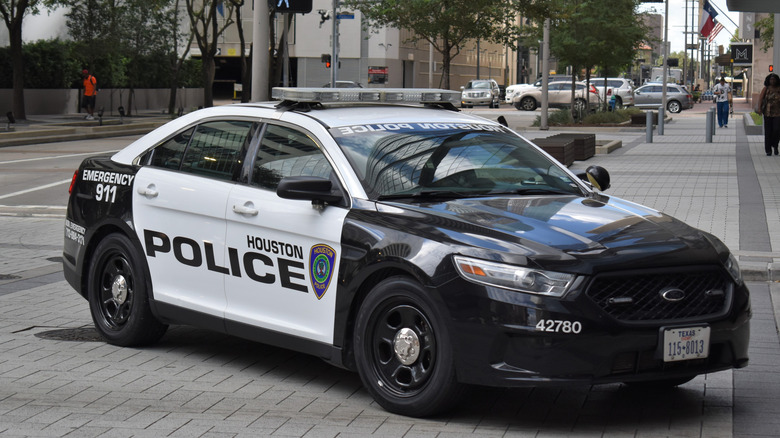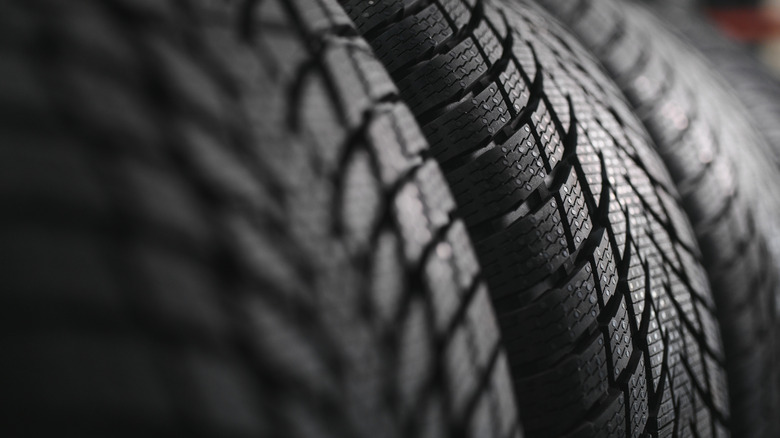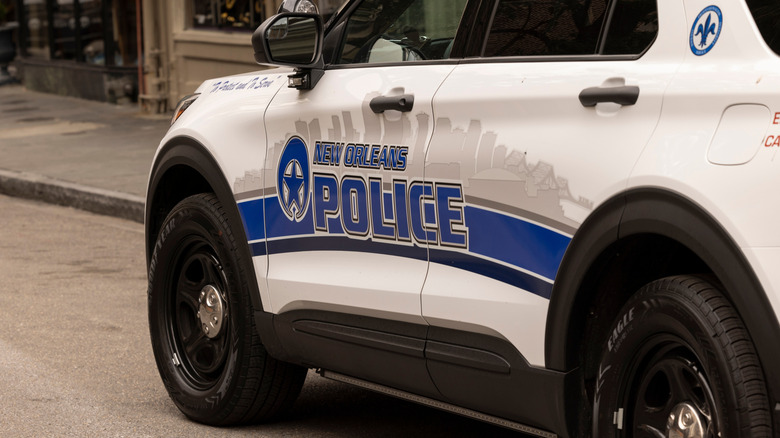Why Police Forces Use Special Tires For Their Cars And Cruisers
For the most part, police forces use cars which look very much like anything you could walk into a dealership and buy. Take the discontinued Ford Crown Victoria as an example – Ford sold thousands of these to civilians over the years, and an equally significant amount were distributed to law enforcement as 'P71' Crown Victoria police interceptors. On the face of it, apart from a few official stickers and some emergency lights, a police Crown Vic looks awfully similar to any other example which anyone could jump behind the wheel of.
However, there are loads of differences between a police and civilian-use Crown Victoria — or any model, for that matter. The interiors are kitted out with intelligent radio systems, secure rear compartments for detaining criminals, plus the exteriors are often seen adorning heavy-duty bumpers. These are some of the more obvious differences, but you might not know that police cars and cruisers also use special tires. The reasoning behind this is fairly simple — cars used by police forces have to be prepared for some pretty intensive usage, which can often demand more strength and performance than what a standard road tire is safely capable of providing.
Here's how police-spec tires differ from traditional rubber
Vehicles designated for patrol use will need to be equipped accordingly, and part of that preparation involves fitting pursuit-rated tires. There is no official certification here, rather tire manufacturers simply develop a tire specifically for this use, and then advertise it as 'pursuit-rated'. Typically, these tires will be built to higher standards than a typical road tire, boasting stiffer sidewalls, higher tire speed ratings, longer-lasting tread, better handling characteristics, and manufacturers will design them to withstand higher forces of impact, too.
This allows patrol officers to enter a pursuit knowing that they have a car equipped and prepared to handle the stresses of such a situation. If, for example, a patrol vehicle was fitted with subpar tires, it would be easier for the vehicle to lose control, or possibly even suffer a complete tire failure, if pursuit speeds exceed what the tire is rated for. The longer lasting tread patterns also allow police forces to keep vehicles out on the road for extended periods of time, rather than having to keep booking them in and out of workshops to have tires replaced at shorter intervals — no doubt this helps the force to cut down on costs, too.
Take a closer look at the wide variety of police tires available
Police vehicles are used for a variety of different applications, be it cruising city streets, storming down highways, or even patrolling off-road areas. Naturally, then, a wide selection of different tires is required to ensure all police vehicles can be equipped correctly.
Time-tested and well-respected tire manufacturer Goodyear displays seven different police-specific tires on their site right now, with everything ranging from all-season and winter-specific patrol tires to high-performance and even all-terrain tires. Features of these tires include large shoulder blocks which allow drivers to maneuver confidently during high-speed pursuits, in addition to wide circumferential grooves, designed to channel water quickly and efficiently, even at speed. Pricing is not listed by Goodyear for any of the police-specific tires, although other sites do list some models of Goodyear police tires, with prices starting from around $189 per corner.


